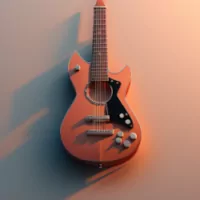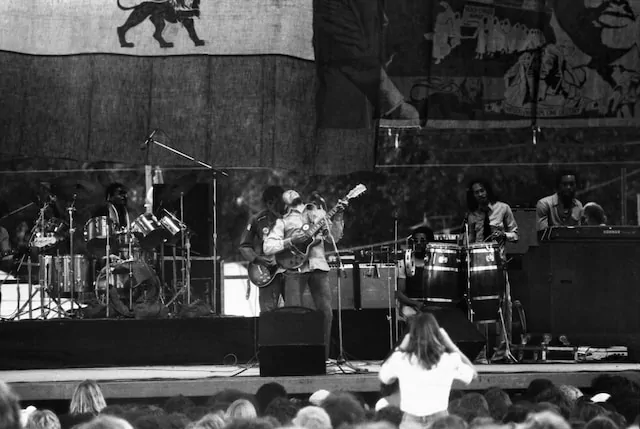Reggae music has captured listeners all around the world for decades with its easygoing grooves, socially conscious lyrics, and contagious rhythms. The guitar, a key component in creating the characteristic sound and atmosphere of reggae music, is at the core of this genre.
The emphasis on rhythm in reggae music is one of its distinguishing characteristics. It is impossible to emphasize the importance of the guitar in creating the rhythmic framework of reggae. To this end, two fundamental guitar techniques are necessary:
- Chops: Reggae guitarists frequently use a strumming technique known as “chops,” in which they mute the strings with their fretting hand. As a result, a staccato, percussive sound is produced that melds seamlessly with the rhythm section, which includes the bass and drums. Chops provide the guitar with a specific function similar to that of a percussive instrument, adding to the distinctive rhythmic landscape of the genre.
- Skanks: The syncopated rhythm guitar pattern known as the skank is the foundation of many reggae tunes. Playing odd chords on the offbeats, usually on the upstrokes, results in a melody.
Learn to Play the Guitar
The guitar is a crucial component in dub music, a subgenre of reggae that lays a lot of emphasis on production techniques that modify the sound. The guitar contributes to the music’s depth and dimension by using techniques like:
Reverb and delay effects are frequently used by guitarists in dub to evoke a feeling of space and atmosphere. By introducing textures that enrich the overall dub sound, these effects strengthen the guitar’s ability to serve as a sonic painter.
Dub Echoes: Tape delay echo effects, in particular, are essential to the dub sound. Guitarists cleverly use echoes to spread waves of sound throughout the music, producing a dreamy and engrossing effect.
Reggae’s foundation is rhythm, but the guitar also excels in the capacity to provide soulful lead lines and melodies that give the music depth and passion. The versatility of the guitar is demonstrated by the melodic fills and solos that frequently use bending and vibrato to contrast with the rhythmic aspects.
There is a strong tradition of social and political commentary in reggae music. The emotional depth of the words and sentiments in reggae songs are enhanced by the guitar’s melodic and harmonic qualities. Guitar chords and melodies have the ability to stir up strong feelings in listeners, allowing musicians to express ideas like love, unity, resistance, and social justice.
The function of the guitar in reggae music goes well beyond that of a simple instrument. It is the conduit through which reggae’s soulful expression comes to life, the glue that holds the rhythm and melody together, the voice that conveys messages of hope and change, and more. The prominence of the guitar in reggae is evidence of its capacity to both sustain and elevate a genre that continues to enthrall listeners all over the world, from the percussive chops and skanks that anchor the rhythm to the emotive lead lines that touch the heart.
Photo by Bill Fairs on Unsplash

